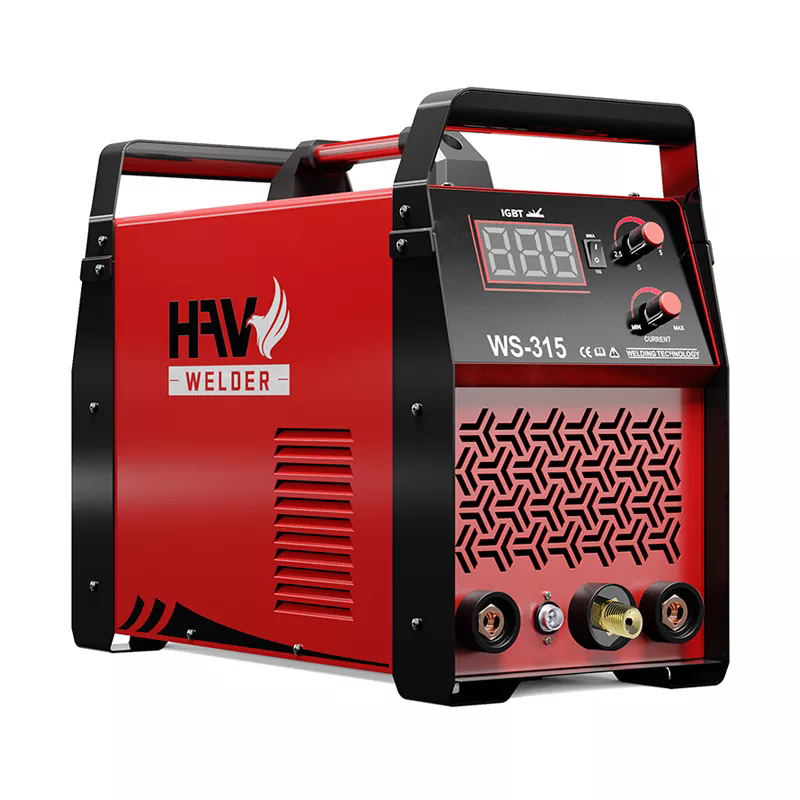How Can a Welding Machine Revolutionize Your Metalworking Projects?
2024-12-24
When it comes to metalworking, whether you're a professional welder or a DIY enthusiast, the welding machine plays a central role in achieving clean, precise, and durable welds. But how can a welding machine revolutionize your metalworking projects? Whether you're joining materials for construction, repair, or artistic purposes, the right welding equipment can significantly impact the outcome. In this blog, we will explore how welding machines have transformed metalworking and how choosing the right one can elevate your projects.
What Is a Welding Machine?
A welding machine is a device used to create a bond between two metal pieces by applying heat and pressure. The process usually involves melting the edges of the metals and then allowing them to cool and fuse together. Welding machines can come in various types, such as MIG (Metal Inert Gas), TIG (Tungsten Inert Gas), Stick welding, and more, each with its unique set of features tailored to different applications.
Why Choose the Right Welding Machine?
The success of any welding project depends largely on selecting the right welding machine for the task at hand. Here's why the correct choice is crucial:
1. Precision and Quality of Welds
A high-quality welding machine ensures consistent and precise welds. Whether you are working on thin sheets of metal or heavy steel, the right machine allows for smooth, even welds that will hold up under stress. A good welding machine provides adjustable settings for heat, voltage, and speed, allowing you to customize the process based on the material and the desired result.
2. Versatility Across Different Projects
One of the significant benefits of modern welding machines is their versatility. Welding machines are designed to handle various materials, such as aluminum, stainless steel, mild steel, and copper. Many machines come with multiple settings that can be adjusted depending on the type of metal you are welding. Whether you're building a fence, constructing a piece of machinery, or crafting intricate metal art, a welding machine offers the flexibility to tackle different projects.
3. Speed and Efficiency
A powerful welding machine can speed up your project significantly. By providing consistent heat and output, modern machines reduce the time spent on each weld, ensuring that projects move forward quickly and efficiently. Whether you're working on a large-scale industrial project or small repairs, using a high-performance welding machine means getting the job done faster with fewer interruptions.
4. Improved Safety Features
Welding is an inherently risky process, but advances in welding machine technology have greatly improved safety. Many modern welding machines come with built-in safety features such as overheat protection, automatic shutoff mechanisms, and thermal overload protection. These features minimize the risk of accidents and make the process safer for welders, even in challenging environments.
5. Cost-Effectiveness
While it might seem that welding machines are a significant investment, they can be highly cost-effective over time. High-quality welding machines reduce the need for frequent repairs and replacements, meaning you'll save money in the long run. Moreover, the improved efficiency and precision of a good welding machine can reduce material waste and rework, saving both time and money.
6. Portability and Convenience
If you're working in a field environment or need to move between job sites, portability is a key factor. Many modern welding machines are compact and lightweight, allowing for easy transport without compromising performance. Portable welding machines provide flexibility, making it easier for professionals and hobbyists to take their equipment wherever they are needed.
Types of Welding Machines and Their Uses
Each type of welding machine has its distinct features and applications. Let's look at the most common types:
1. MIG Welders
MIG (Metal Inert Gas) welding machines are ideal for beginners and professionals alike. These machines are easy to use and provide clean welds with minimal spatter. MIG welders are often used in automotive repair, construction, and fabrication. They work well with thin to medium-gauge metals and are known for their speed and efficiency.
2. TIG Welders
TIG (Tungsten Inert Gas) welding machines are used for high-precision work on thin materials. TIG welding is the preferred method for applications that require a clean, strong, and aesthetically appealing weld. It is widely used in industries like aerospace, automotive, and artistic metalworking. TIG welders are versatile and can be used on a variety of metals, including stainless steel and aluminum.
3. Stick Welders
Stick welding, also known as Shielded Metal Arc Welding (SMAW), is one of the oldest and most versatile types of welding. Stick welding machines are often used for heavy-duty projects and outdoor applications, where portability and durability are important. Stick welders can handle a wide range of materials, including rusted or painted metals, making them ideal for construction and repair tasks.
4. Multi-Process Welders
For those who need a versatile machine capable of performing different welding processes, multi-process welders are an excellent choice. These machines can handle MIG, TIG, and Stick welding, making them ideal for various types of welding projects. Multi-process welders are especially useful for small businesses or hobbyists who may not need a specialized machine for each task.
Key Features to Look for in a Welding Machine
When choosing a welding machine, several factors should be considered to ensure it meets your needs:
1. Power Output: Make sure the machine can handle the thickness of metal you plan to weld. A machine with adjustable power settings allows for greater flexibility.
2. Portability: If you're working on-site or need to move your equipment frequently, consider the weight and portability of the machine.
3. Ease of Use: Look for machines with user-friendly controls, especially if you are a beginner. Some machines come with advanced features, but simple controls can make the learning curve easier.
4. Duty Cycle: The duty cycle refers to how long the machine can operate continuously before it needs to cool down. Choose a machine with a duty cycle suitable for your workload.
5. Safety Features: Make sure your welding machine includes necessary safety features, such as automatic shutoff, overload protection, and ventilation to prevent overheating.



